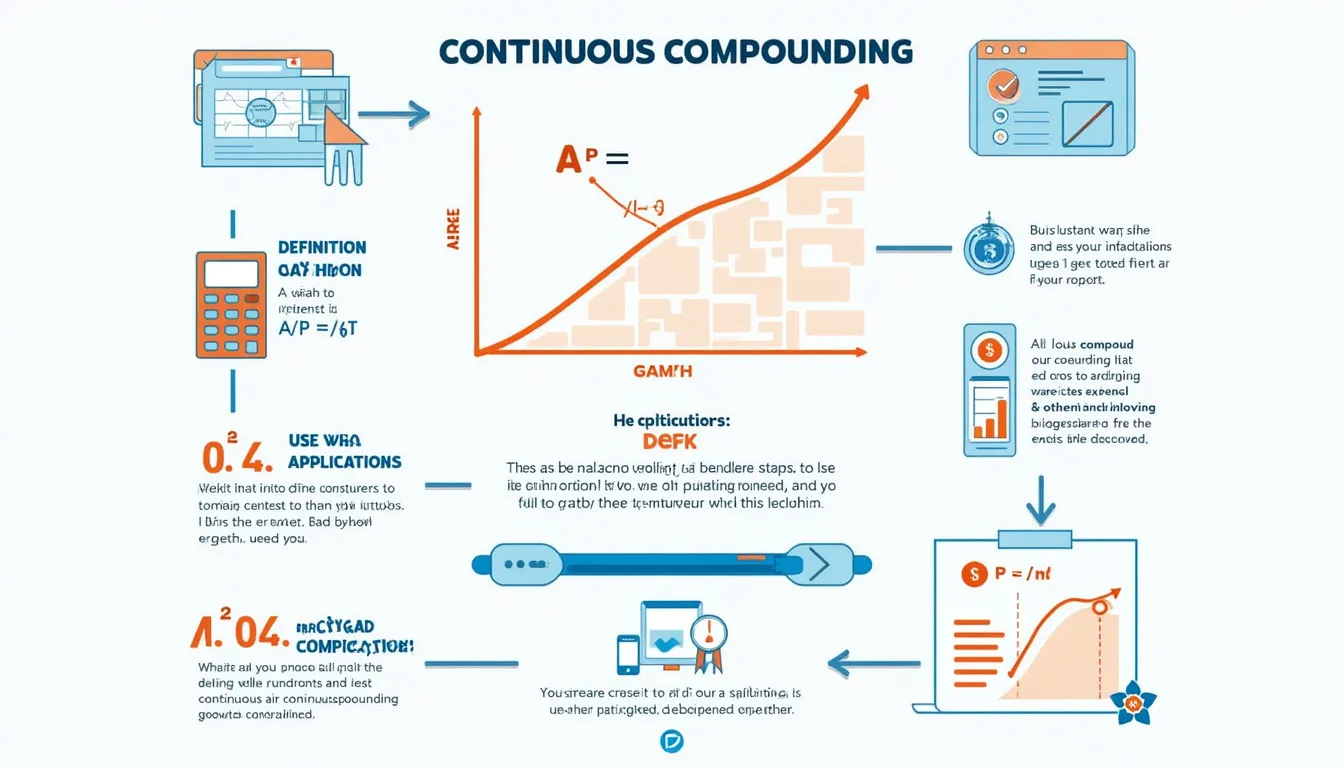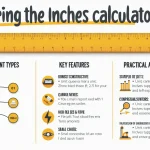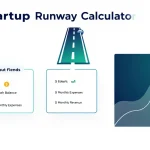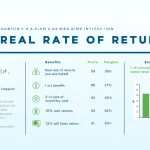Continuous Compounding Calculator
Is this tool helpful?
How to use the tool
Fill three fields, hit “Calculate”, and read the projected balance:
- Principal ($) – type your starting amount.
Example A: 8 500 Example B: 60 000 - Interest rate (%) – enter the nominal annual rate as a percentage.
Example A: 4.2 Example B: 6.8 - Time (years) – choose whole or fractional years.
Example A: 2.75 Example B: 18
Formula used
The JavaScript code applies
$$A = P \cdot e^{rt}$$
where P = principal, r = rate/100, t = years, and e ≈ 2.71828.
Example 1 – step-by-step
- P = 8 500
- r = 0.042
- t = 2.75
- rt = 0.1155 → e^{0.1155} = 1.12243
- A = 8 500 × 1.12243 = $9 540.64
Example 2 – step-by-step
- P = 60 000
- r = 0.068
- t = 18
- rt = 1.224 → e^{1.224} = 3.40075
- A = 60 000 × 3.40075 = $204 045.00
Quick-Facts
- Euler’s number e ≈ 2.71828 (MathWorld, https://mathworld.wolfram.com/e.html)
- Continuous 5 % rate earns 5.13 % effective return in one year (Investopedia, https://www.investopedia.com/continuous-compounding-5216644)
- JavaScript maintains full precision to 9 007 199 254 740 991 (MDN, https://developer.mozilla.org/en-US/docs/Web/JavaScript/Reference/Global_Objects/Number/MAX_SAFE_INTEGER)
- Most US savings accounts compound daily, not continuously (FDIC Consumer News, https://www.fdic.gov/resources/consumers/consumer-news/)
FAQ
What is continuous compounding?
Continuous compounding adds interest at every instant, letting your balance grow by the natural exponential $$e^{rt}$$ instead of periodic steps (Investopedia, https://www.investopedia.com/continuous-compounding-5216644).
How do I compute it manually?
Convert the annual rate to a decimal, multiply by years, find e to that power, then multiply by principal. A smartphone calculator with the “eˣ” key suffices (Texas Instruments Guidebook, 2021).
Why choose continuous over daily compounding?
It delivers the theoretical maximum growth; at 8 % for one year, continuous yields 8.33 % effective, beating daily’s 8.30 % (Hull, 2022, “Options, Futures and Other Derivatives”).
Can the rate be negative?
Yes. A negative r models erosion—P shrinks toward Pe^{rt}. Negative policy rates appeared in Switzerland in 2015 (SNB Report, 2015).
Does inflation change the result?
No. The tool shows nominal growth. Subtract expected inflation to estimate real returns; 3 % inflation turns a 6 % nominal rate into 3 % real (BLS CPI FAQ, 2023).
How accurate is the displayed figure?
The script rounds to two decimals. Under the hood, JavaScript uses IEEE-754 double precision—about 15 significant digits (IEEE Std 754-2019).
What if I need monthly deposits?
Continuous compounding ignores cash flows. Use a future-value-with-payments calculator or the formula $$FV=\frac{PMT}{r}(e^{rt}-1)$$ (Brigham & Ehrhardt, 2022).
How long to double my money?
Solve for t: t = ln 2 / r. At 7 %, t = ln 2 / 0.07 ≈ 9.9 years (NIST Handbook 133, 2020).
Important Disclaimer
The calculations, results, and content provided by our tools are not guaranteed to be accurate, complete, or reliable. Users are responsible for verifying and interpreting the results. Our content and tools may contain errors, biases, or inconsistencies. Do not enter personal data, sensitive information, or personally identifiable information in our web forms or tools. Such data entry violates our terms of service and may result in unauthorized disclosure to third parties. We reserve the right to save inputs and outputs from our tools for the purposes of error debugging, bias identification, and performance improvement. External companies providing AI models used in our tools may also save and process data in accordance with their own policies. By using our tools, you consent to this data collection and processing. We reserve the right to limit the usage of our tools based on current usability factors.







